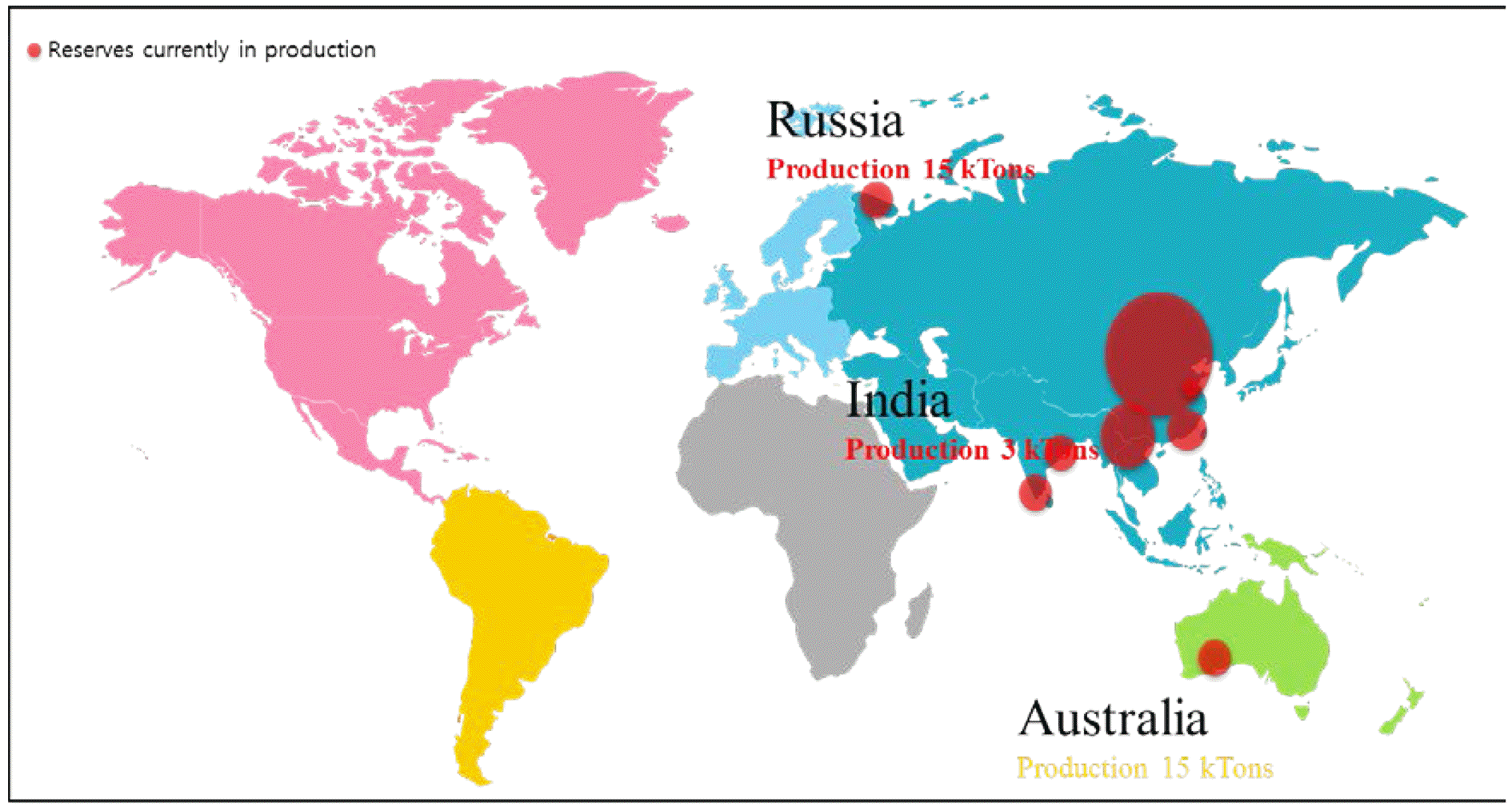Search
- Page Path
- HOME > Search
- [Korean]
- Trends and Implications of International Standardization for Rare Earths
- Sardar Farhat Abbas, Sang-Hyun lee, Bin Lee, Bum-Sung Kim, Taek-Soo Kim
- J Korean Powder Metall Inst. 2018;25(2):165-169. Published online April 1, 2018
- DOI: https://doi.org/10.4150/KPMI.2018.25.2.165

- 820 View
- 5 Download
- 2 Citations
-
 Abstract
Abstract
 PDF
PDF Rare earth elements (REEs) are considered to be vital to modern industry due to their important roles in applications such as permanent magnets, automobile production, displays, and many more. The imbalance between demand and supply of REEs can be solved by recycling processes. Regarding the needs of industry and society, the International Organization for Standardization, Technical Committee 298 (ISO/TC298) Rare Earths has been recently launched for developing international standards on rare earth elements. In accordance with the suggestion of its constituents, it is tentatively working to develop the appropriate standards under five working groups (WG) on terms and definitions (WG1), element recycling (WG2), environmental stewardship (WG3), packaging, labelling, marking, transport, and storage (WG4), and testing analysis (WG5). The scope and structure of ISO/TC298 on the topic of rare earths is discussed in this document.
-
Citations
Citations to this article as recorded by- Synthesis and magnetic properties of Sm2Co17 particles using salt-assisted spray pyrolysis and a reduction-diffusion process
Tae-Yeon Hwang, Jimin Lee, Min Kyu Kang, Gyutae Lee, Jongryoul Kim, Yong-Ho Choa
Applied Surface Science.2019; 475: 986. CrossRef - Worker Safety in the Rare Earth Elements Recycling Process From the Review of Toxicity and Issues
Seo-Ho Shin, Hyun-Ock Kim, Kyung-Taek Rim
Safety and Health at Work.2019; 10(4): 409. CrossRef
- Synthesis and magnetic properties of Sm2Co17 particles using salt-assisted spray pyrolysis and a reduction-diffusion process
- [Korean]
- Industrial Supply Chain Trend of Domestic Tungsten
- Joon-Woo Song, Sang-Hyun Lee, Hyun-Seon Hong, Hong-Yoon Kang, Soon-Jik Hong
- J Korean Powder Metall Inst. 2012;19(1):79-86.
- DOI: https://doi.org/10.4150/KPMI.2012.19.1.079

- 676 View
- 7 Download
- 3 Citations
-
 PDF
PDF -
Citations
Citations to this article as recorded by- Extraction Factor Of Tungsten Sources From Tungsten Scraps By Zinc Decomposition Process
J.-H. Pee, G.H. Kim, H.Y. Lee, Y.J. Kim
Archives of Metallurgy and Materials.2015; 60(2): 1311. CrossRef - Microstructure and Elevated Temperature Strength of W-ZrC Composites with Micrometric and Nanosized ZrC Particles
Yoon Soo Han, Sung-Soo Ryu
Journal of Korean Powder Metallurgy Institute.2014; 21(6): 415. CrossRef - Investigation of Material Flow and Industrial Trend of Domestic Europium
Han-Jin Ko, Jeong-Gon Kim, Il-Seuk Lee, Hong-Yoon Kang, Soon-Jik Hong
Journal of Korean Powder Metallurgy Institute.2013; 20(5): 382. CrossRef
- Extraction Factor Of Tungsten Sources From Tungsten Scraps By Zinc Decomposition Process
- [Korean]
- Synthesis of Carbon Nanotubes by Chemical Method at Warm Temperatures
- Jung-Ho Ahn, Sang-Hyun Lee, Yong-Jin Kim, Byung-Sik Chung
- J Korean Powder Metall Inst. 2006;13(5):305-312.
- DOI: https://doi.org/10.4150/KPMI.2006.13.5.305

- 335 View
- 0 Download
-
 Abstract
Abstract
 PDF
PDF - Amorphous carbon nanotubes were synthesized by a reaction of benzene, ferrocene and Na mixture in a small autoclave at temperatures as low as 400°C. The resulting carbon nanotubes were short and straight, but their inner hole was filled with residual products. The addition of quartz to the reacting mixture considerably promoted the formation of carbon nanotubes. A careful examination of powder structure suggested that the nanotubes in this process were mainly formed by surface diffusion of carbon atoms at the surface of solid catalytic particles, not by VLS(vapor-liquid-solid) mechanism.
TOP
 KPMI
KPMI


 First
First Prev
Prev


